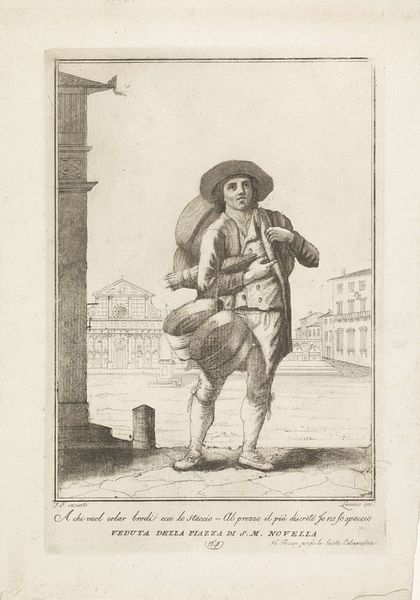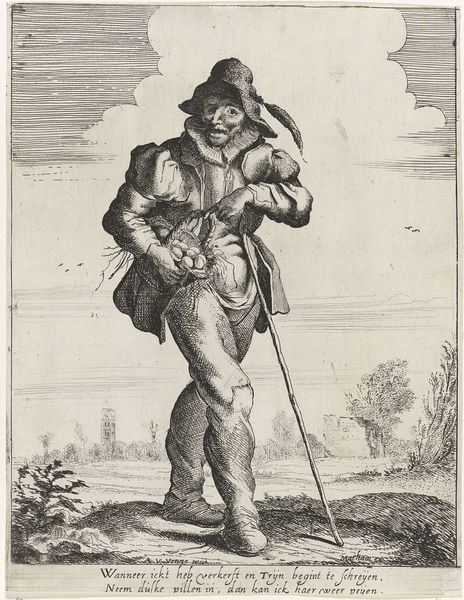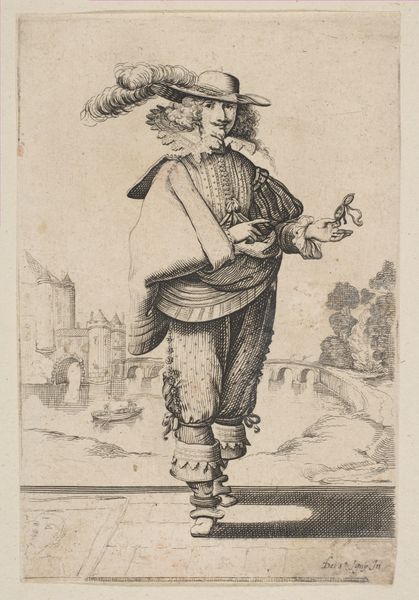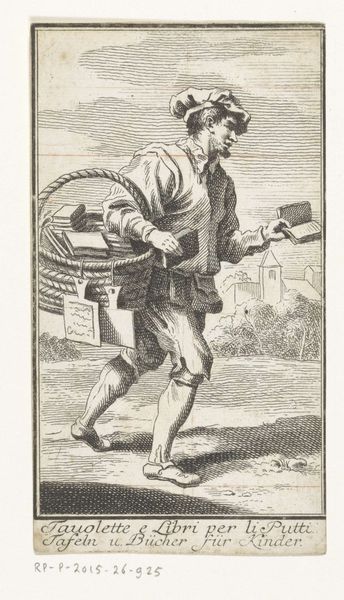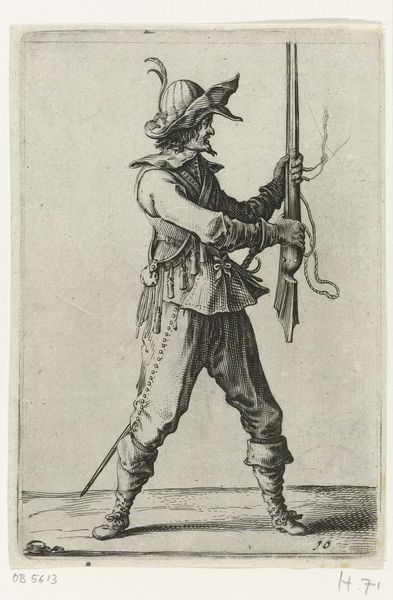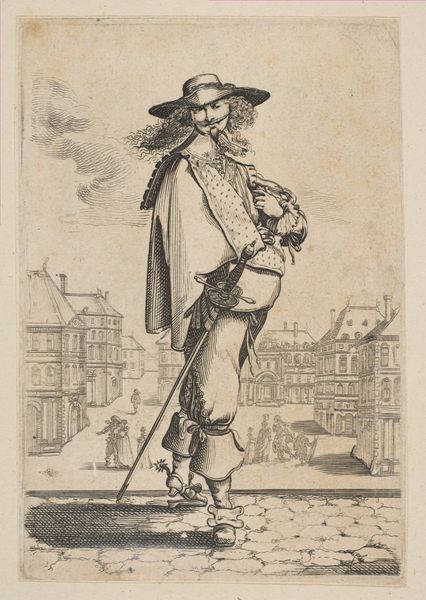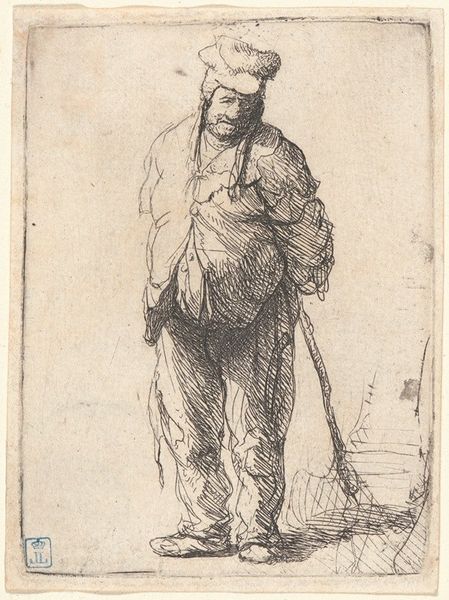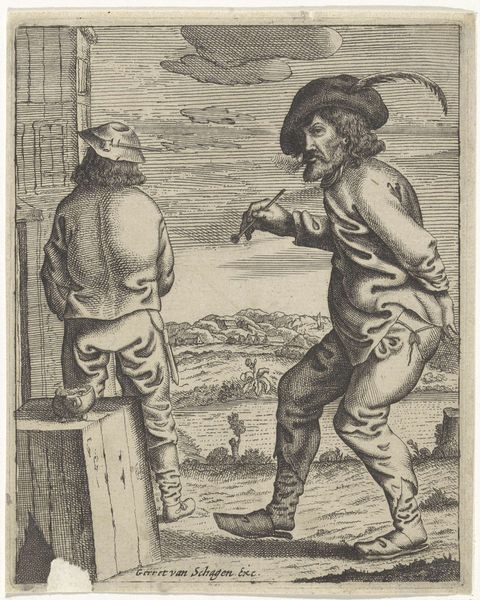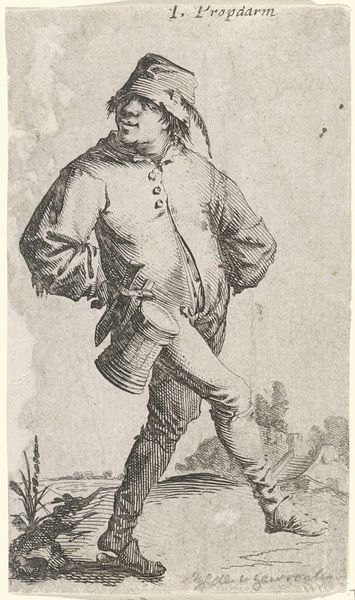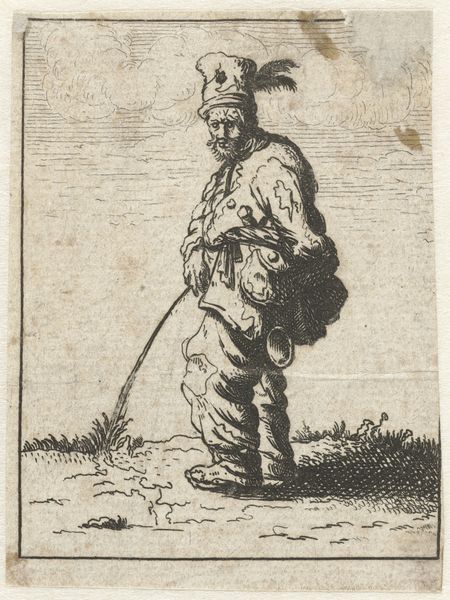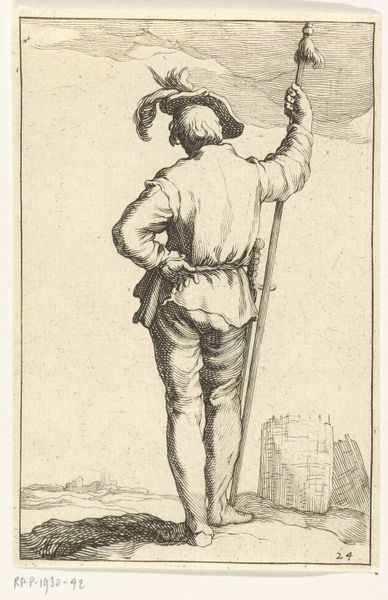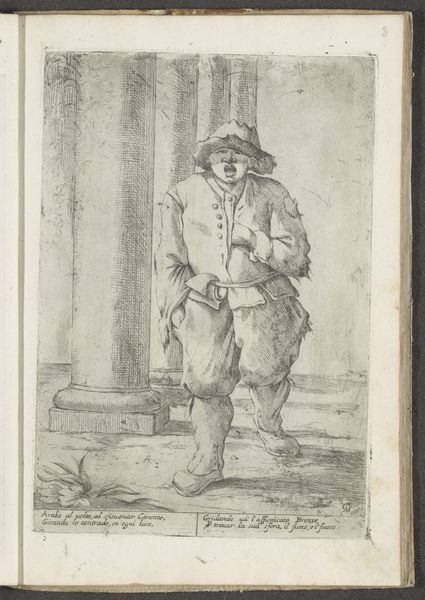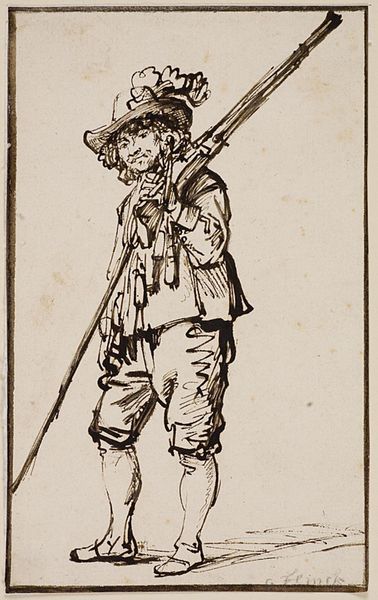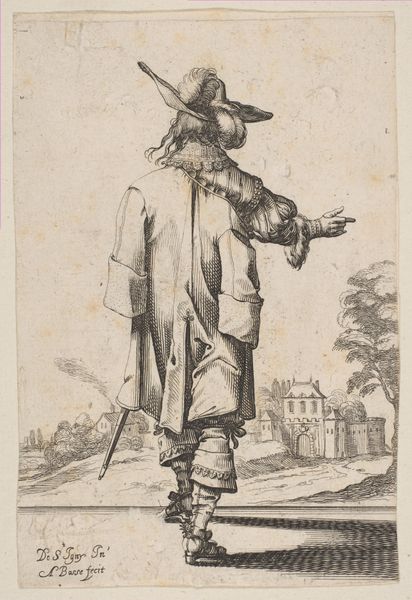
print, engraving
#
portrait
#
baroque
# print
#
figuration
#
line
#
engraving
Dimensions: height 100 mm, width 57 mm
Copyright: Rijks Museum: Open Domain
Curator: Here we have a portrait from sometime between 1647 and 1700 titled "Tomasso Aniello." It's an engraving, that is, a print made from an incised metal plate. Editor: It's wonderfully etched! All those densely worked lines giving texture to his clothing. The chap is somewhat rumpled. Curator: Absolutely, and those are details that give a picture of the labor inherent in the clothing production. Look at the subject: a working class figure, perhaps a fisherman given the rod he carries. He appears solid and assertive, defying typical high art depictions by putting his work-worn image at the forefront. Editor: Yes, this Tomasso seems ready for a day’s work, yet, there is also this regal air about him; a confident posture juxtaposed against the backdrop of ordinary buildings and a distant cityscape. It’s quite powerful. Considering the time it was created, it seems to question societal norms about class. Curator: Precisely, this portrait embodies social commentary through its mere existence. The material—a print—would have been more widely accessible than a unique painted portrait. Its distribution challenges ideas about who deserves to be represented. Who sees it and how is it consumed, materially and culturally? The line work is dense, creating shading, depth and volume. You can feel the texture of the cloth, and see every wrinkle in his garments. It's a work made of skillful and time-consuming hand labor in its own right. Editor: That’s it: materiality combined with representation makes the work deeply compelling. In choosing an "everyman" subject matter and using printmaking to create an image, we see something more profound. In a time rife with strict class divisions, does this print empower or romanticize him? His stance and clothing suggest dignity. The piece asks us: What is labor’s inherent dignity and under what societal constraints does he carry it? Curator: These observations give us tools to critically think about the interplay between representation, labor, and distribution, showing art's potential to mirror and maybe subtly question the established social order. Editor: Indeed! Thank you. It makes me rethink about the unsung voices. Curator: Agreed, a rich piece from all perspectives.
Comments
No comments
Be the first to comment and join the conversation on the ultimate creative platform.
